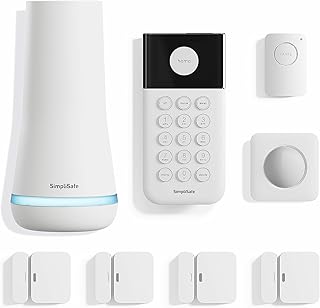Protect Your Home For Less With Light Bulb Security Cameras (Indoor & Outdoor)
When it comes to home security, many people assume they need to spend a fortune on complex systems. However, thanks to modern technology, you can enhance your home’s security while saving money with a light bulb security camera. These innovative devices combine a light source with a hidden camera, offering an affordable and discreet way to monitor your home.
How a Light Bulb Security Camera Helps You Save Money
1. Reduce Home Insurance Costs
Many insurance companies offer discounts on home insurance for homeowners who install security cameras. Having a light bulb security camera as part of your security setup can demonstrate to insurers that you are taking steps to protect your home, which can lead to lower premiums. Be sure to check with your insurance provider about available discounts for security systems.
2. Prevent Theft and Property Damage
A visible security system can be a strong deterrent to criminals. Thieves are less likely to target a home that has security cameras, reducing the risk of theft, vandalism, and property damage. This means you won’t have to deal with costly repairs or replacements of stolen items. Additionally, many light bulb security cameras come with motion detection alerts, which notify homeowners instantly of suspicious activity, allowing for quicker responses.
3. Save on Professional Security Services
Traditional home security systems often require expensive installation fees, monitoring subscriptions, and maintenance costs. A light bulb security camera offers a one-time purchase cost with no need for professional installation. Most models can be easily set up using a mobile app, eliminating the need for monthly monitoring fees. Some models even include free cloud storage or SD card recording options, eliminating the need for paid storage services.
4. Lower Energy Costs
Many light bulb security cameras come with energy-efficient LED lights, meaning they consume less electricity than traditional security lights. Some models also feature motion detection, so the light and camera activate only when necessary, helping you save on your electricity bill. This can be particularly useful for outdoor security, as you won’t have to keep bright floodlights on all night.
5. Multi-Functionality Saves You Money
Since light bulb security cameras serve a dual purpose (lighting and security), you save money by purchasing a single device instead of separate security cameras and outdoor lights. This makes them ideal for driveways, entryways, patios, garages, and indoor spaces.
Additional Benefits of a Light Bulb Security Camera
- Remote Monitoring: Keep an eye on your home from anywhere using your smartphone.
- Two-Way Audio: Communicate with visitors, delivery personnel, or potential intruders directly through the camera.
- Night Vision: Many models feature infrared night vision to capture clear footage even in low light.
- Cloud & Local Storage: Save recordings either in the cloud or on a microSD card for later viewing.
- Easy Setup: No complicated wiring—just screw it into a standard light socket and connect to Wi-Fi.
- Multiple Viewing Angles: Some models include pan-tilt-zoom (PTZ) features, allowing you to adjust the camera remotely.
Best Light Bulb Security Camera Options on Amazon
If you’re looking for an affordable security solution, consider some top-rated light bulb security cameras available on Amazon. Websites like BestLightBulbCamera.com review and recommend some of the most reliable models. Be sure to compare features like resolution, storage options, and connectivity before making a purchase.
Additional Home Security Tips for Extra Savings
While a light bulb security camera is an excellent step toward affordable home security, here are a few more ways to protect your home while saving money:
- Use Smart Locks: Upgrade to smart locks to eliminate the need for expensive locksmith services.
- Install Motion Sensor Lights: Motion-activated lighting can deter intruders and save on electricity.
- Secure Windows and Doors: Reinforce entry points with simple and affordable solutions like security bars and smart sensors.
- Join a Neighborhood Watch: Collaborate with neighbors to enhance security without extra cost.
- Display Security Stickers: Even if you don’t have a full security system, placing security stickers on doors and windows can deter criminals.
Affordable Security & Peace of Mind
Investing in a light bulb security camera is an easy and cost-effective way to enhance home security while saving money. Whether it’s reducing insurance premiums, preventing theft, or lowering energy costs, this simple device offers peace of mind without breaking the bank. By combining smart security solutions, simple deterrents, and community awareness, you can keep your home safe on a budget.
Looking for more ways to save money? Visit SaveMoneyWith.net for more budget-friendly tips and strategies!


